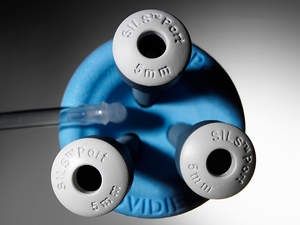Single incision laparoscopic surgery (SILS) is a relatively new approach to laparoscopic surgery that involves making a single incision in the patient's abdomen, through which multiple surgical instruments are inserted to perform the surgery. SILS offers several potential benefits over traditional laparoscopic surgery, including reduced scarring and faster recovery times. However, it is not without its challenges and limitations. This essay aims to explore the current state of SILS, including its benefits, challenges, and potential future developments.
Section 1: Overview of single incision laparoscopic surgery
Single incision laparoscopic surgery (SILS) is a type of minimally invasive surgery that involves making a single incision in the patient's abdomen, typically in the umbilical area. Through this incision, multiple surgical instruments are inserted to perform the surgery. The instruments are typically flexible and can be manipulated to perform a wide range of surgical procedures.
SILS offers several potential benefits over traditional laparoscopic surgery, including reduced scarring, faster recovery times, and reduced pain and discomfort. However, it also presents several challenges and limitations, including technical difficulties, increased complexity, and limited availability of specialized instruments.
Section 2: Benefits of single incision laparoscopic surgery
Reduced scarring
One of the primary benefits of SILS is reduced scarring. With traditional laparoscopic surgery, several small incisions are made in the patient's abdomen to insert the surgical instruments. While these incisions are small, they can still result in visible scars. With SILS, only a single incision is made in the umbilical area, which can result in a more cosmetically appealing result.
Faster recovery times
SILS may also offer faster recovery times compared to traditional laparoscopic surgery. Because only a single incision is made, there may be less tissue damage, and the patient may experience less pain and discomfort. Additionally, because there are fewer incisions, there may be less risk of post-operative complications, such as infection.
Reduced pain and discomfort
SILS may also be associated with reduced pain and discomfort compared to traditional laparoscopic surgery. Because only a single incision is made, there may be less tissue damage, which can result in less pain and discomfort for the patient.
Section 3: Challenges and limitations of single incision laparoscopic surgery
Technical difficulties
One of the primary challenges associated with SILS is technical difficulties. Because the surgical instruments must be inserted through a single incision, the surgeon may have limited visibility and maneuverability. Additionally, the instruments may need to be repositioned frequently to perform the surgery, which can be time-consuming and challenging.
Increased complexity
SILS is also associated with increased complexity compared to traditional laparoscopic surgery. Because the surgical instruments must be inserted through a single incision, the surgeon may need specialized instruments that are designed for this approach. Additionally, the surgeon may need specialized training and expertise to perform SILS effectively.
Limited availability of specialized instruments
Another challenge associated with SILS is the limited availability of specialized instruments. Because SILS is a relatively new approach to laparoscopic surgery, there may be a limited selection of instruments available, which can make it challenging to perform certain surgical procedures.
Current state of single incision laparoscopic surgery
Despite the challenges and limitations associated with SILS, it is becoming an increasingly popular approach to laparoscopic surgery. Many surgeons and medical centers are investing in specialized training and equipment to perform SILS effectively. Additionally, there are ongoing efforts to develop new instruments and techniques to overcome the challenges associated with SILS.
Section 5: Future developments
Advanced instrument technology
One potential area of development for SILS is advanced instrument technology. There are ongoing efforts to develop more specialized and advanced instruments that are specifically designed for SILS. These instruments may provide greater maneuverability and visibility for the surgeon, which can help to overcome some of the technical challenges associated with SILS.
Robotic-assisted SILS
Another potential area of development for SILS is robotic-assisted surgery. Robotic-assisted surgery combines the benefits of laparoscopic surgery with the precision and accuracy of robotics. By using a robotic system to control the surgical instruments, surgeons may be able to perform SILS more effectively and with greater precision.
Improved training and education
Improved training and education for SILS may also be an area of development in the future. As more surgeons and medical centers adopt SILS, there may be a need for more standardized training and education programs to ensure that surgeons are properly trained and have the necessary skills to perform SILS effectively.
Expanded applications for SILS
Finally, there may be an expansion of applications for SILS in the future. As surgeons become more proficient with SILS and as new instruments and techniques are developed, SILS may be used in a wider range of surgical procedures. This could lead to even greater benefits for patients, such as reduced pain and scarring and faster recovery times.
Conclusion
In conclusion, single incision laparoscopic surgery (SILS) is a relatively new approach to laparoscopic surgery that offers several potential benefits over traditional laparoscopic surgery, including reduced scarring, faster recovery times, and reduced pain and discomfort. However, it is not without its challenges and limitations, including technical difficulties, increased complexity, and limited availability of specialized instruments. Despite these challenges, SILS is becoming an increasingly popular approach to laparoscopic surgery, and there are ongoing efforts to develop new instruments and techniques to overcome these challenges. As SILS continues to evolve, it may offer even greater benefits for patients and be used in a wider range of surgical procedures.



